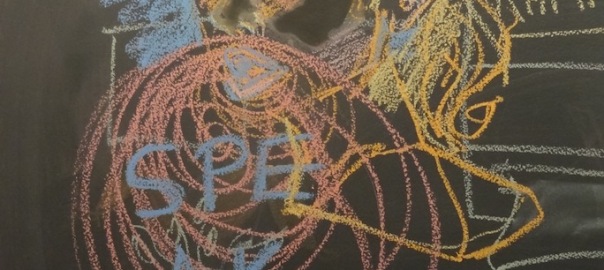Mika Conradie and Molemo Moiloa of VANSA, the Visual Arts Network of South Africa, tell us about the development of a code or set of principles of practice in the South African artistic and cultural field, which is characterized by the recent development of its post-apartheid infrastructure. This article continues the discussion over cultural policies that has started with Brazil and China in the recently published Transnational Dialogues Journal 2014.
The Visual Arts Network of South Africa (VANSA), through the support of the National Arts Council of South Africa, has commissioned research towards a national code of practice for the Visual Arts. Taking a cue from this international and principally ‘global north’ practice, we looked at various codes that have been developed in parts of Europe, in Australia and North America.
The codes of best practice in these visual arts industries fell into a few categories: codes that were supported with legislation and by governments; grassroot codes that were more like propositions and that came from organisations and collectives that emerged from or were influenced by the Occupy movement; and codes that indicated the support of very particular agents in the art world (gallerists, artists, etc). These codes came out of a particular arts infrastructure that is now buckling under state cuts in a post-2008 world economy, often framed as the infinite present of the ‘Great Recession’. Guidelines produced by the UK-based Precarious Workers Brigade and Carrotworkers Collective, and a certification process for the payment of artists developed by New York-based Working Artists and the Greater Economy (W.A.G.E), progress the ideologies of Occupy and move between activist manifesto and formalised code-making. While codes endorsed by governments and the wider art industry in places like Australia and Canada were developed before 2008, and along the lines of ensuring ethical business practice between agents, providing security to art workers, and determining the societal and economic value of visual art. Both sets of code-making practice emerge from different times and economic climates, but what they have in common is a response to the perceived precarity of their times. This precarity concerns the vulnerability of artists who in some cases are freelance workers with no set or secure income, art workers who have no recourse to specific regulations in terms of pay, public museums and art institutions who are seeing a degree of their funding being cut and the precariousness of criticality that is faced due to a perceived over-commercialisation of the visual arts industry that Maria Lind, Olav Velthuis and Gerald Raunig have written about across various platforms.
While these different guidelines and codes of best practice speak back to various kinds of crises that they locate in the ‘global north’, we began wondering whether a code could be put into practice in our visual arts industry. As work towards a possible state policy, or guideline for state funding and practice, we must ask ourselves to what extent such a code would be viable, relevant and implementable. Primarily, we must ask oursleves to what extent such a code could emerge out of the particularities of our local context. By reading the role of these codes and the context in which they emerged, a shift occurred in our research, away from necessarily developing a code and towards thinking about a ‘principles’ of common interest in the local industry. We found that the regulatory impulse of the code format could be misplaced in an industry where art practice seems to constantly shift to adapt to erratic state funding; has to evolve to both fit and work around changing government mandates, languages and support; and where individuals have developed their own tacit codes in order to maintain their practices. At core, was a question about the extent to which those who might loosely affiliate to the arts could imagine themselves as a collective whole – before constituting the rules by which that whole would function.
This shift has prompted a number of questions for us: how is precarity and crisis felt or articulated, if at all, in our own industry, and what structures and strategies have individuals developed to ensure the survival of the industry? How do we characterise our own arts infrastructures and what alternative infrastructures have been produced? Is there a commonly acknowledged practice that brings the industry together? And if so, could that form as the basis for a commonly acknowledged need to clarify the principles by which we act. These questions provide a set of propositions through which to read the activities of our industry, and to begin understanding the connections between various practices.
The South African arts industry consists of variant iterations of “infrastructure” that have shifted to various degrees since the coming of universal suffrage in 1994. This provides an opportunity to rethink what infrastructure means in this locale. Infrastructure can presume the immovable physicality of state institutions (museums and galleries) that were once expected to organise the South African art world in terms of the circulation of art and of critical discourse production. These infrastructures, developed out of a colonial model of misplaced appropriation, all but completely find their intention and their geography incompatible. The neo-classical architecture that house these collections now seem an incongruous fit to the post-1994 cities that have emerged around them and that are sites of new and different forms of survival. This, essentially, seems like a crisis in form and in understanding contemporary publicness, where new urgencies and contemporaneities conflict with structures built for exclusion. The parameters around these buildings are further tightened due to (very) limited state funding and the tangle of strings attached to this funding. This is a somewhat paradoxical situation where resources are momentary and on a smaller scale (funding), while also being more certain and fixed (buildings).
While escape from the immobility of particular forms might not be an option, alternative ways of being and surviving beyond an ossified infrastructure can emerge. Like the scenarios of economic exchange in inner-city Johannesburg described in AbdouMaliq Simone’s People as Infrastructure, actors become important in setting up a network that despite (or even because of) erratic access to resources is able to sustain itself, and ultimately survive. An infrastructure that manifests relationally and engenders its own tacit codes of practice. This requires a shift towards other kinds of resources, with the industry supporting itself through relationship, network and connection rather than state-based or legislated (read here policy driven) structures. In other scenarios survival means shape-shifting and so individuals in the industry are prone to adapting their practice – project spaces that want to carry on nurturing young and experimental artists move into the commercial sphere to sustain their practice; some curators create institutions that are mobile, inflatable, and are not tied to particular spaces; art fairs that want the financial support of the government must rhizomatically grow parts that speak the governments’ language, parts that weren’t there last year and might be pruned back next year.
These practices indicate some of the multiple layers in which individuals are operating. Can we understand these variant adaptations as constituting a similar practice? A practice that moves different agents in the industry towards a common something? While we know that individuals develop practices to ensure their own survival in the industry, we can also see these individual practices as ensuring the survival of the industry as a whole – and, that the survival of the industry as a whole is a collective interest to which all would strive. And if adaptation and a rethinking of social infrastructures and horizontal architectures is necessary to understand modes of practice within the South African context, what implication does this have for the development of a code of practice, or the development of formal arts policy?
While we would not at any point suggest that policy is not sufficiently viable in the ‘global south’ context due to the dynamic nature of our infrastructural forms, the question does arise of how to think about a policy that might enable that dynamism – in direct contradiction to what policy is often constructed to be. In developing a code or set of principles of practice, it becomes evident that the code would need to respond to the necessary flexibilities of the industry it seeks to respond to and to assist.
While still in the early stages of this research, a few key concepts have come to the fore from which to take this process forward:
- How can we understand a set of conditions (such as a code or principle of practice) that enables and supports the survival of a precarious industry?
- Can we understand a principles of practice as something nuanced and dynamic enough to serve its practioners’ mobilities?
- Is the concept of a principles of practice even compatible with notions of flexibilities and mobilities?
- If not, what are the frames by which a sector can come to determine its shared interests and a commitment to maintaining them?
- How does an organisation such as VANSA, that seeks to develop frames by which the Visual Arts Sector might function better, then bring this flexibility to the table of policy?
VANSA operates as a support point and development agency for contemporary art practice in South Africa. We develop industry knowledge, resources, networks and projects that are concerned with realising new social, cultural and economic possibilities for contemporary art practice in the South African – and wider African – context. Through research, network development, policy directives and creative discourse development, VANSA represents the interests of visual arts practitioners on a broader sector scale. Molemo Moiloa is the Director of VANSA.
Molemo Moiloa is the Director of VANSA. Mika Conradie is a Johannesburg-based writer, archivist, and researcher. She has been commsioned by VANSA to develop a feasibility report towards a principles of practice for the Visual Arts Sector in South Africa.
[Cover photo: Isabella Guedes, “Dialogue. Self-portrait 2014”, chalk on blackboard, detail]


